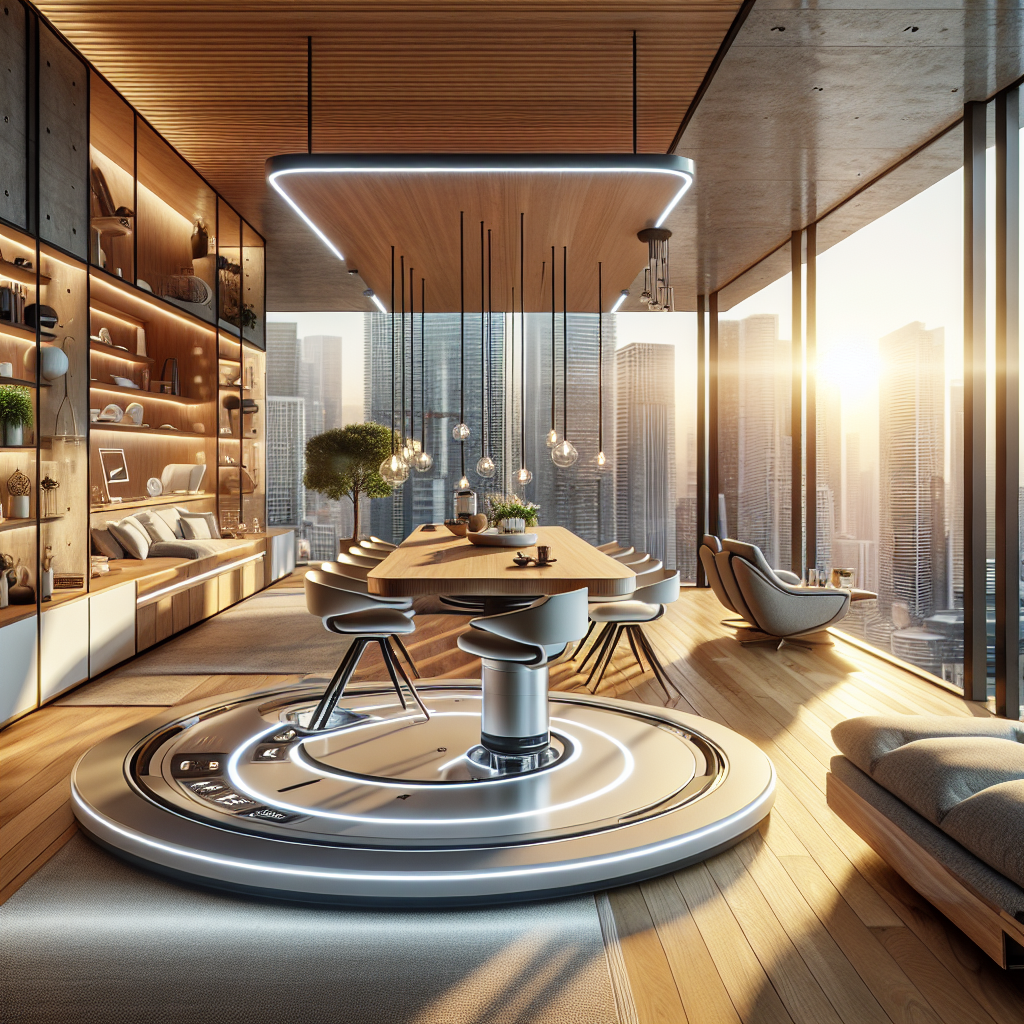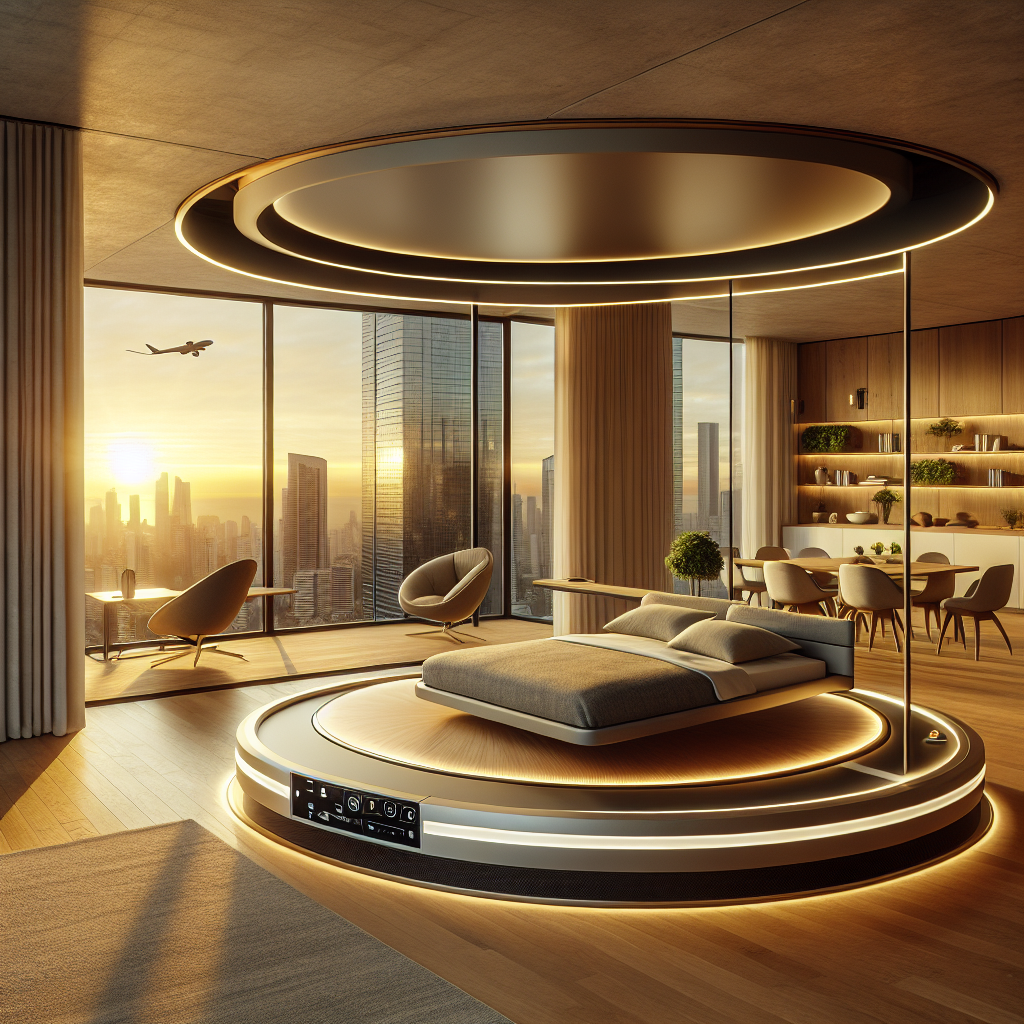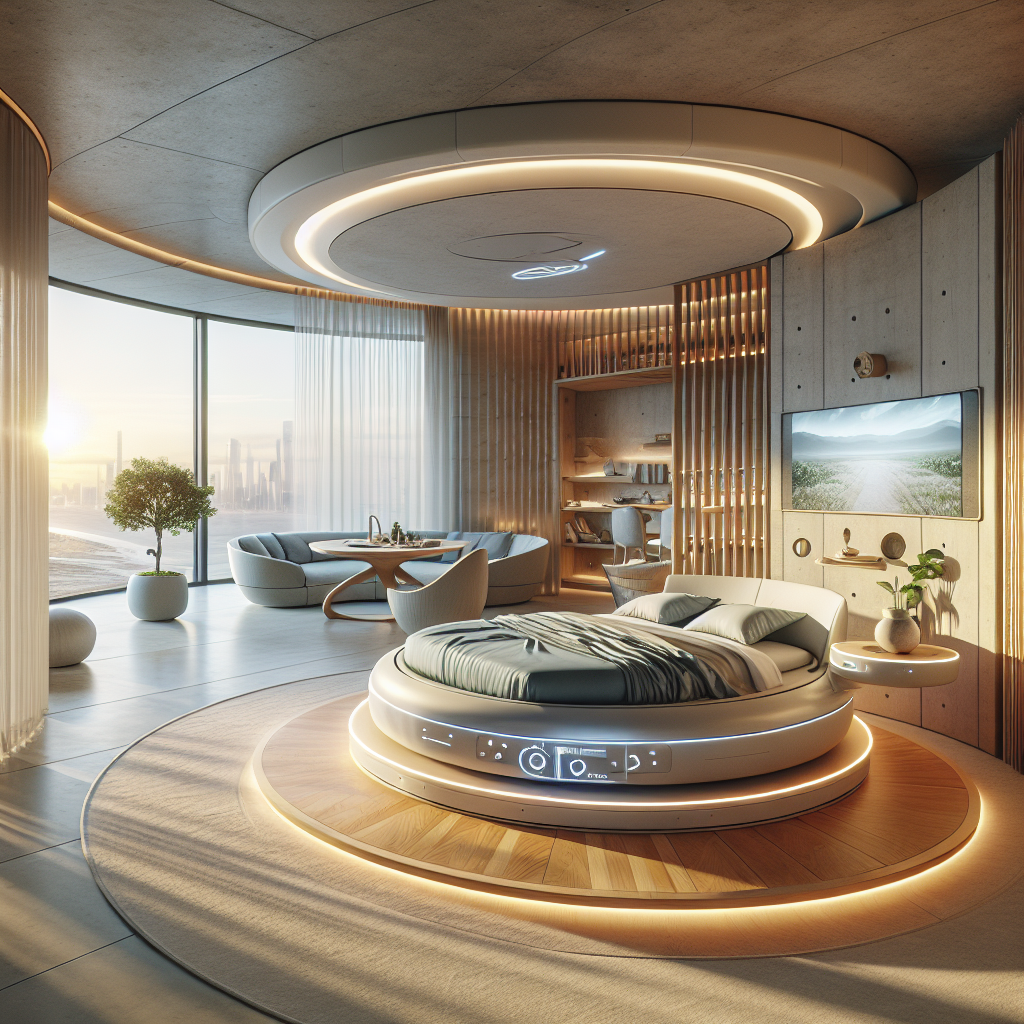Synchronized furniture pieces: rotating and adjusting to occupant routines

Synchronized Furniture Pieces: Rotating and Adjusting to Occupant Routines
In an era where technology and design intertwine seamlessly, the boundaries between static interiors and dynamic living spaces are dissolving. Today’s discerning occupants seek more than just aesthetic appeal; they crave environments that intuitively respond to their daily rhythms. Enter the age of synchronized furniture—innovative pieces that rotate, adjust, and transform, harmonizing effortlessly with human routines. This emerging trend not only redefines interior design but also elevates the very experience of inhabiting a space.
The Rise of Responsive Interiors
The concept of furniture adapting to human activity is not entirely new; modular designs and multifunctional pieces have long addressed spatial constraints and evolving lifestyles. However, the current wave of synchronized furniture takes adaptability to unprecedented heights. Leveraging advanced technologies such as artificial intelligence, robotics, and sensor-driven automation, these furnishings actively learn and anticipate occupant behaviors, adjusting their configurations in real-time to optimize comfort, functionality, and aesthetics.
Imagine waking up to a bedroom where your bed gently rotates to face the sunrise, aligning perfectly with your morning routine. As you step into the living room, your sofa smoothly pivots toward the window, offering an optimal view of the cityscape. Later, as you prepare dinner, your dining table automatically extends, accommodating unexpected guests. These scenarios are no longer futuristic fantasies but tangible realities reshaping contemporary interiors.
Designing for Human-Centric Experiences
At the heart of synchronized furniture lies a profound commitment to human-centric design. By understanding and responding to individual routines, these pieces enhance occupant well-being, productivity, and overall satisfaction. Recent studies underscore the psychological benefits of adaptive environments, highlighting reduced stress levels, improved mood, and heightened creativity among users who interact with responsive spaces.
Moreover, synchronized furniture aligns seamlessly with the principles of biophilic design, fostering deeper connections between occupants and their surroundings. By dynamically adjusting to natural elements such as sunlight, airflow, and views, these furnishings create environments that feel inherently organic and nurturing.
Innovative Examples Leading the Way
Several pioneering designers and brands are at the forefront of this synchronized furniture revolution, crafting pieces that exemplify elegance, functionality, and technological sophistication.
Take, for instance, the “Orbit Sofa” by renowned Italian design house Minotti. This elegant piece employs subtle motorized mechanisms and integrated sensors to gently rotate, aligning itself with occupants’ preferred seating positions and focal points within the room. Its luxurious upholstery and minimalist aesthetic belie the sophisticated technology beneath, offering users an intuitive and refined experience.
Similarly, the “Helio Dining Table” by innovative Dutch studio Moooi utilizes embedded sensors and AI-driven algorithms to detect the number of occupants and adjust its surface area accordingly. Crafted from sustainably sourced timber, the table gracefully expands or contracts, maintaining its sculptural beauty while effortlessly accommodating varying social dynamics.
These examples illustrate how synchronized furniture transcends mere novelty, embodying thoughtful design that enriches daily life. By integrating technology seamlessly into form and function, designers are redefining what it means to inhabit a truly responsive space.
Technological Foundations: AI, Robotics, and Sensor Integration
The remarkable capabilities of synchronized furniture are underpinned by cutting-edge technologies that have matured significantly in recent years. Artificial intelligence plays a pivotal role, enabling furniture to learn occupant preferences, anticipate behaviors, and autonomously adjust configurations over time. Advanced robotics and precision motor systems facilitate smooth, silent movements, ensuring transitions feel natural and unobtrusive.
Sensor integration is equally critical, providing real-time data on occupancy, ambient conditions, and user interactions. These sensors, often discreetly embedded within furniture frames or upholstery, inform AI-driven algorithms that orchestrate seamless adjustments. As highlighted in our exploration of smart home technology, such integration fosters cohesive, intuitive living environments that respond fluidly to human presence and activity.
Sustainability and Longevity: A Circular Approach
Beyond enhancing occupant experiences, synchronized furniture aligns closely with contemporary sustainability goals. By adapting to evolving needs and preferences, these pieces inherently promote longevity, reducing the frequency of replacements and minimizing waste. Furthermore, many designers prioritize eco-friendly materials and modular construction methods, ensuring furniture components can be repaired, upgraded, or recycled with ease.
This circular economy mindset, detailed in our article on zero-waste masterpieces, positions synchronized furniture as a responsible choice for environmentally conscious consumers. By investing in pieces that adapt and endure, occupants contribute to a more sustainable and resilient design landscape.
Challenges and Considerations
Despite its numerous advantages, synchronized furniture presents certain challenges designers and manufacturers must thoughtfully address. Privacy concerns, data security, and user autonomy are paramount considerations, particularly as AI-driven systems collect and analyze occupant data. Transparent communication, robust security protocols, and user-friendly interfaces are essential to fostering trust and ensuring positive interactions.
Additionally, the integration of advanced technologies can elevate costs, potentially limiting accessibility. Designers must balance innovation with affordability, exploring scalable solutions and modular systems that democratize access to responsive furnishings without compromising quality or functionality.
The Future of Synchronized Furniture
Looking ahead, synchronized furniture is poised to become increasingly prevalent, reshaping residential, commercial, and public spaces alike. Innovations such as augmented reality interfaces, biometric recognition, and even emotional AI promise to further personalize interactions, creating environments that not only respond to physical routines but also emotional states and psychological needs.
Moreover, synchronized furniture holds immense potential in specialized contexts, such as healthcare facilities, educational institutions, and workplaces. Adaptive seating arrangements, responsive lighting systems, and dynamically configurable spaces can significantly enhance comfort, productivity, and well-being across diverse settings.
As explored in our feature on responsive design, the convergence of technology, human-centric principles, and sustainable practices positions synchronized furniture as a transformative force in contemporary interiors. Designers, architects, and consumers alike stand at the threshold of a new era, where furnishings no longer remain static objects but become active participants in shaping meaningful, adaptive, and enriching experiences.
Conclusion: Embracing Dynamic Interiors
Synchronized furniture represents a profound evolution in interior design, embodying a harmonious fusion of technology, aesthetics, and human-centric innovation. By dynamically adjusting to occupant routines, these pieces elevate daily interactions, enhance well-being, and foster deeper connections between individuals and their environments.
As we continue to explore and embrace the possibilities of responsive interiors, synchronized furniture stands as a testament to design’s boundless potential to enrich lives, transform spaces, and inspire meaningful change. The future of furniture is no longer static—it moves, adapts, and evolves, perfectly synchronized with the rhythms of human life.








